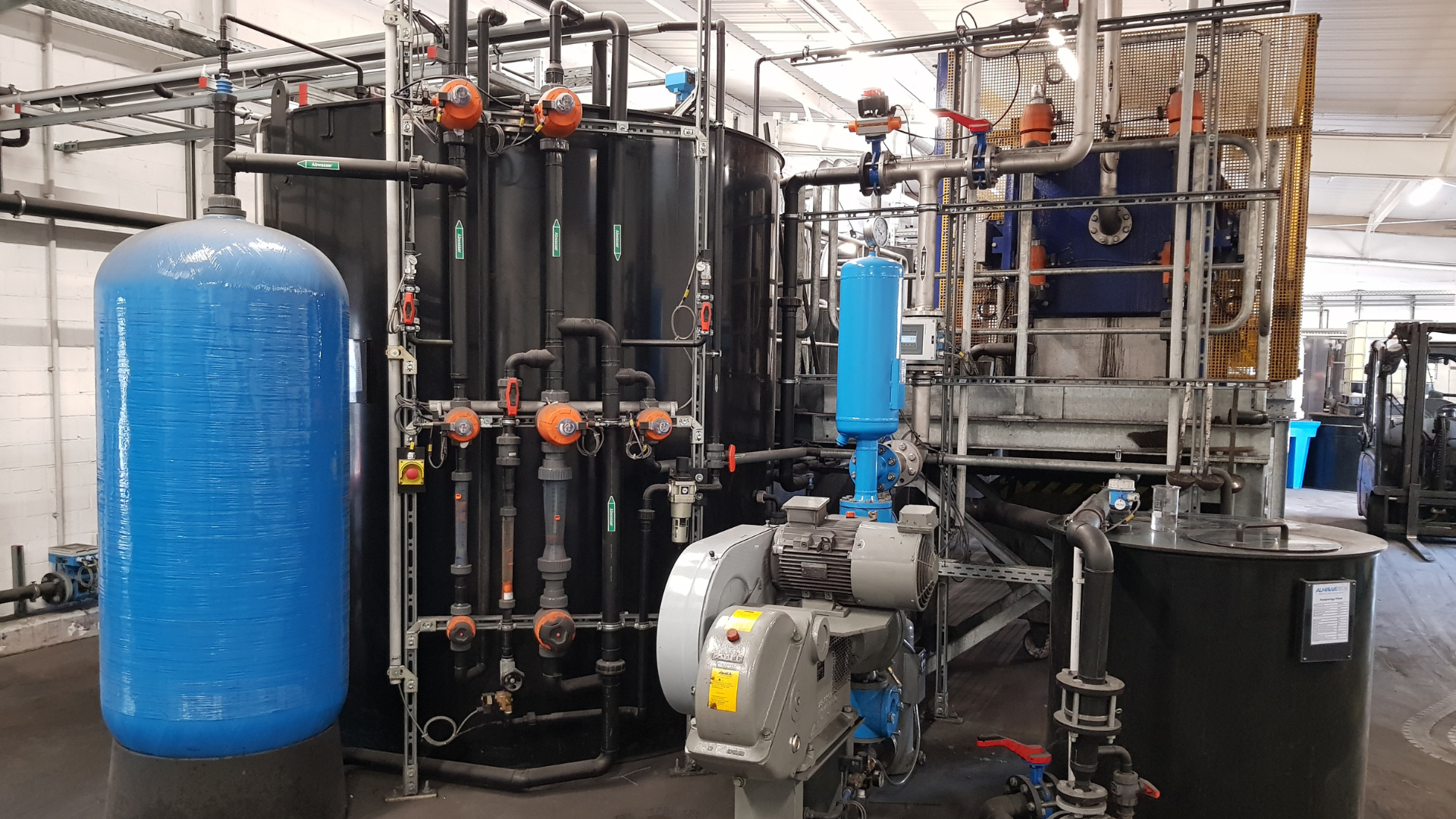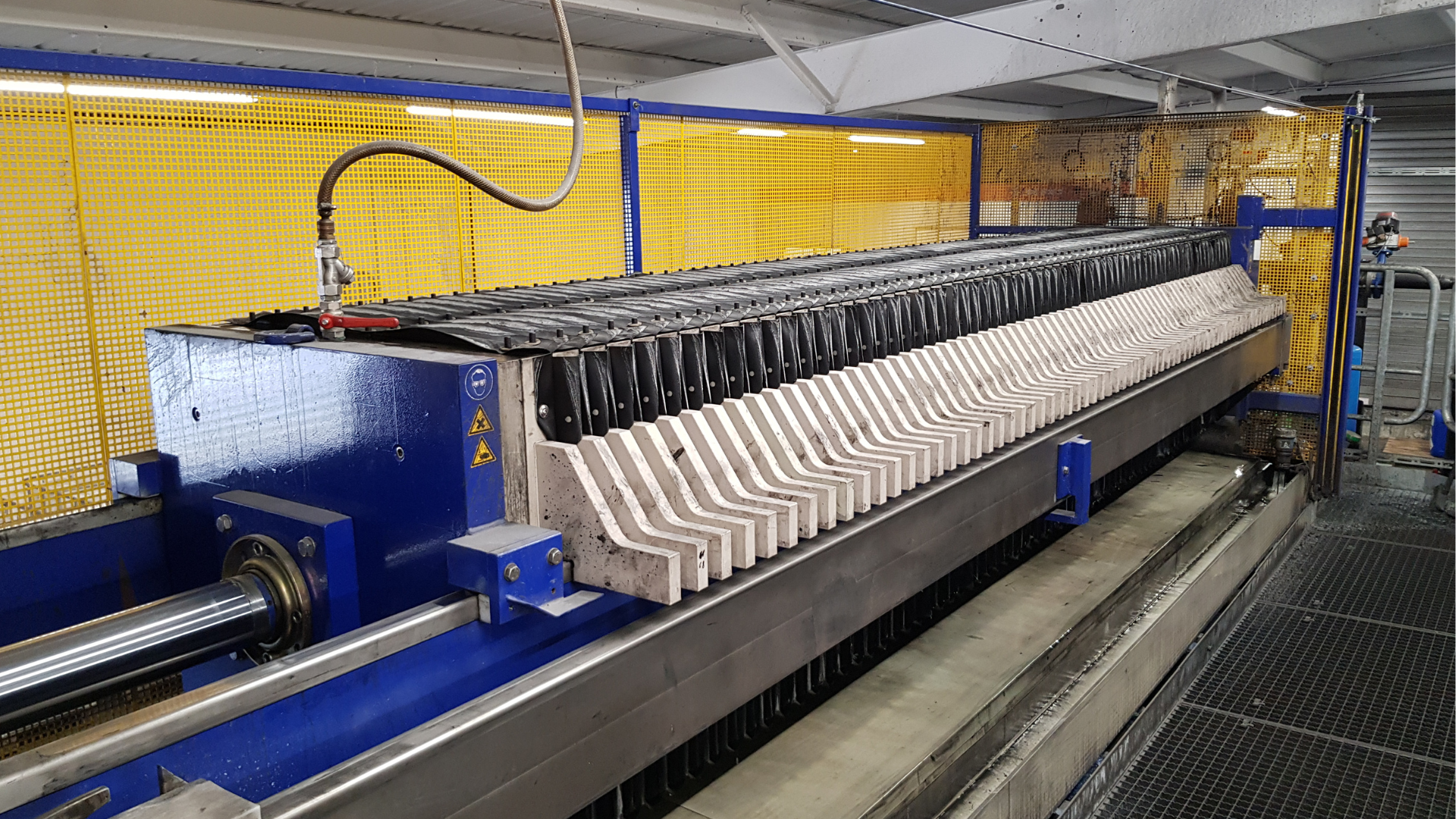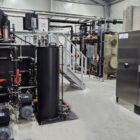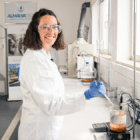The production of paints, coatings and pigments is a complex industrial process that involves a large number of raw materials, chemical reactions and physical processing steps. A central aspect of this industry is the treatment of the resulting wastewater, which is often highly contaminated with organic, inorganic and coloring substances. In particular, chemical-physical plants(CP plants) and chamber filter presses play a key role in the effective cleaning and treatment of this wastewater.
Table of contents
Processes in paint production
Paint production typically involves the following steps:
Raw material preparation
- Use of pigments, binders, solvents and additives.
- Pigments: Inorganic (e.g. titanium oxide) and organic compounds.
- Binders: Polymers such as acrylates, alkyd resins or epoxies.
Mixing and dispersing
- Uniform distribution of the pigments in the carrier liquid.
- Use of high-performance stirrers or ball mills.
- Formation of emulsions and suspensions.
Reaction and filtration
- Chemical reactions such as polymerization or esterification.
- Filtration to remove insoluble residues.
Filling
- Finished products are filled into containers and prepared for dispatch.
Characteristics of wastewater from paint production
The wastewater from paint production is highly complex and contains the following impurities:
- Organic substances: solvents, binder residues and additives.
- Inorganic substances: pigments, heavy metals (e.g. from catalysts or dyes).
- Particles and suspended solids: Undissolved pigments and solids.
- High COD and BOD: Indicator for organic pollution.
- Color-intensive substances: Pigments and dyes that are hardly soluble in water.
Waste water treatment in paint production
The treatment of this highly contaminated wastewater requires robust and adaptable technologies. Chemical-physical plants(CP plants) and chamber filter presses are essential to effectively remove the pollutants and comply with legal discharge limits.
1. chemical-physical plants (CP plants)
How the CP system works: The CP system combines several chemical and physical processes to remove pollutants from wastewater:
- Neutralization: Adjustment of the pH value to optimize the chemical reactions. The pH value is usually adjusted to 6.5-8.5.
- Felling: Addition of Precipitants such as iron(III) chloride or aluminum sulfate for converting dissolved substances into insoluble compounds.
- Heavy metals and phosphates are converted into poorly soluble hydroxides.
- Flocculation: Use of flocculants such as polymers to form stable flocs that are easier to separate.
- Sedimentation: settling of the flocs in a sedimentation tank or a lamella clarifier.
Advantages of the CP system:
- Flexible adaptation to different wastewater compositions.
- Effective removal of heavy metals, pigment residues and paint particles.
- Pre-treatment for downstream processes such as filtration or flotation.

Photo: Our ALMA CHEM MCW CP system for the treatment of wastewater from paint and varnish production
2. chamber filter presses
How the chamber filter press works: After chemical-physical treatment, the resulting sludge is fed to the chamber filter press. This process is used for mechanical dewatering of the sludge.
- Sludge thickening: The sludge is pumped into the chambers, where filter plates with filter cloths separate the liquid portion.
- Pressure filtration: Pressure (up to 16 bar) forces the water through the filter cloths, leaving the solids behind as filter cake.
- Removal of the filter cake: The dewatered sludge is removed as a solid filter cake and disposed of in accordance with legal requirements.
Advantages of the chamber filter press:
- High dewatering capacity, which reduces the volume of sludge.
- Simple operation and low maintenance.
- Suitable for sludges with a high content of pigments and other solids.

Photo: Our chamber filter press for dewatering sludge from CP systems
Key role of CP systems and chamber filter presses
The combination of CP systems and chamber filter presses offers the following advantages:
- Compliance with legal discharge limits: Efficient removal of heavy metals, color particles and organic residues.
- Reduction in disposal costs: The volume reduction achieved by the chamber filter press minimizes disposal costs.
Applications in paint production
Pigment production:
- Separation of paint particles and binder residues.
- Neutralization of acidic or alkaline wastewater.
Color production:
- Removal of suspended solids and color particles before discharge into the sewer system.
Cleaning processes:
- Treatment of wash water from paint mixers and dispersing machines.
- Removal of surfactants and color residues.
Conclusion
In paint production, effective wastewater treatment is essential in order to comply with environmental regulations and ensure the sustainability of processes. Chemical-physical systems and chamber filter presses are proven technologies that not only ensure compliance with legal requirements, but also enable economical and resource-saving wastewater treatment. They offer a reliable and scalable solution, particularly for color-intensive wastewater and wastewater containing heavy metals.
For further information on our products, please feel free to contact us at any time!








